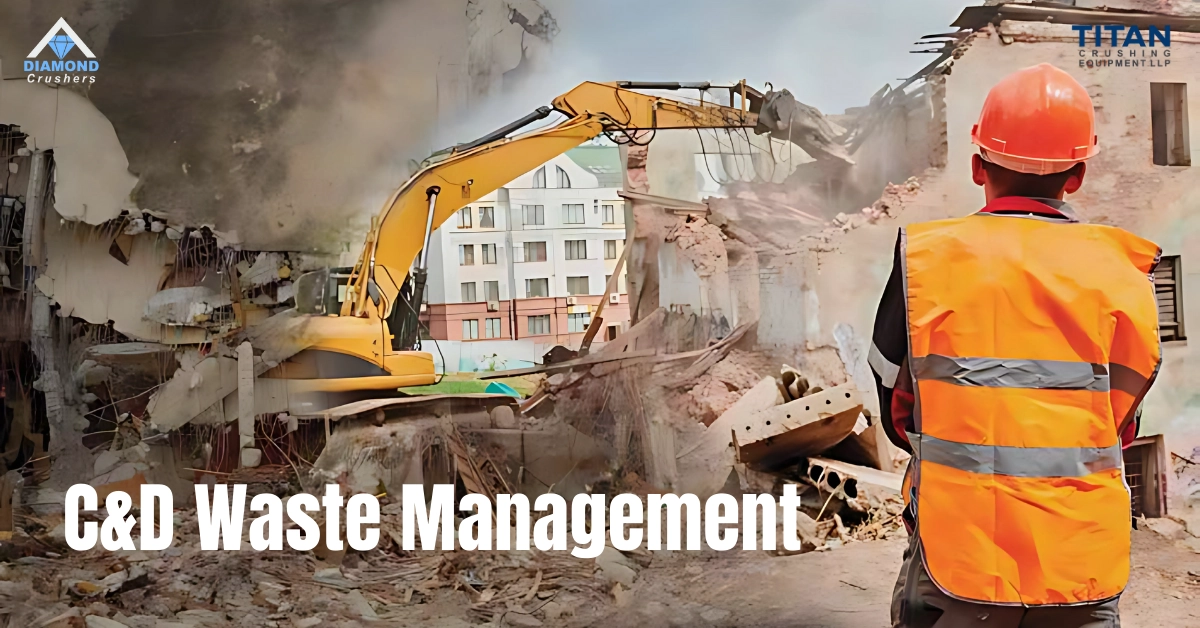From Rubble to Riches: India’s Crusher Revolution
Construction and demolition waste is emerging as a major global concern. The sector generates more than 25% of total waste globally. The construction industry also accounts for 39% of global greenhouse gas emissions, which demands environmentally responsible solutions and stronger waste management practices.
India’s approach to C&D waste management has changed dramatically. We at Titan Crushing Equipment L.L.P have installed Multiple Crushing & Screening plants during the past decade. As C&D waste management grows in importance, the recycling world continues to change faster. The mobile Crushing & Screening segment grows 30-35% each year, which shows a move toward quicker waste management solutions.
Let us explore how India’s crushing industry changes C&D waste management and creates new opportunities for sustainable development through effective recycling.
The Evolution of Crushing Technology in India
India’s crushing industry has rapidly evolved — from manual operations to purpose-built systems that support modern infrastructure and waste management.
Cone crushers today are more compact yet deliver high efficiency through smart engineering that reduces wear, maintains cavity levels, and lowers cost per ton.
VSI crushers are widely used in highway projects supporting C&D waste management by producing consistent, cubical-shaped aggregates ideal for asphalt.
On-site crushing is now common across construction and redevelopment projects, helping companies turn waste into usable material while cutting transport costs with a focus on durability, mobility, and quick setup. Today’s crushing equipment is built to meet the demands of fast-paced project timelines, harsh site conditions, and strict waste management requirements.
Revolutionary Jaw Crushers and Cone Crushers
Jaw and cone crushers are vital machines in India’s crushing industry. Jaw crushers are used first to break big stones into smaller pieces using two strong plates. Then cone crushers take over, crushing the smaller pieces into fine, evenly shaped stones that are perfect for construction. Jaw crushers are simple and cost-effective, while cone crushers give better final shape and need less maintenance over time, supporting better C&D waste management.
New designs have made both types of crushers smaller, stronger, and more efficient. Modern jaw crushers, placed at the center of waste management systems, reduce damage and last longer. Cone crushers are now about 30% smaller but still powerful. These machines help recycling efforts by converting concrete and construction waste into useful materials, reducing the need to use new natural resources and supporting cleaner, greener construction in India.
Features of Diamond Crushers' Equipment
Diamond Crushers machines come with features that improve performance and reduce environmental impact:
- Real-time Monitoring and Optimization
Tracks the machine’s performance continuously to improve efficiency and reduce downtime, playing a key role in efficient waste management during operations.
- Energy-efficient Motors
Energy-efficient motors use less electricity but still give high crushing output, helping save power during tough waste management work.
- Water Recycling Systems
Reuse water to minimize waste and lower environmental impact, supporting in-process recycling efforts and environmental compliance.
We are proud that Diamond Crushers has completed a Construction and Demolition (C&D) project in Mumbai, demonstrating our ability to handle large-scale recycling operations within comprehensive C&D waste management frameworks.
Economic Impact of Construction Waste Recycling
The Indian construction and demolition waste recycling market is projected to grow from INR 24,540 billion in 2024 to INR 36,290 billion by 2033, with a steady CAGR (Compound Annual Growth Rate) of 4.00%. This growth, supported by expanding C&D waste management strategies, is suitable for the environment and saving money.
Recycling construction waste like wood, concrete, and steel is cheaper than burning it and helps companies manage waste better. It also creates jobs and supports a circular economy by reusing materials instead of throwing them away.
Government tax breaks support construction waste recycling, but higher GST (18%) on recycled products compared to 5% on natural aggregates makes them less attractive. This pricing gap slows adoption. With ₹140,00,000 crore in infrastructure plans by 2025, demand for recycling crushers is set to grow.
Conclusion
In conclusion, India’s crushing industry is not just growing—it’s evolving. With rising demand, government support, and a strong push toward recycling, crushers are leading the way in sustainable construction. The future lies in turning waste into opportunity, and the crushing sector is at the heart of this transformation.
FAQs:
C&D waste management means handling the waste created during construction, renovation, or demolition by collecting, separating, and recycling it. The main aim is to protect the environment and make the most of useful materials by reusing them.

